When it comes to choosing an above-ground pool for your backyard, one of the most important decisions you’ll make is the pool’s size and shape. A correctly chosen size and shape not only add to the visual appeal of your outdoor space but also significantly impacts the overall pool experience. The right choice can facilitate your desired activities, fit within your available space, align with local regulations, and importantly, fit within your budget. This blog post will guide you through the key considerations in choosing the perfect size and shape for your above-ground pool.
Assessing Available Space
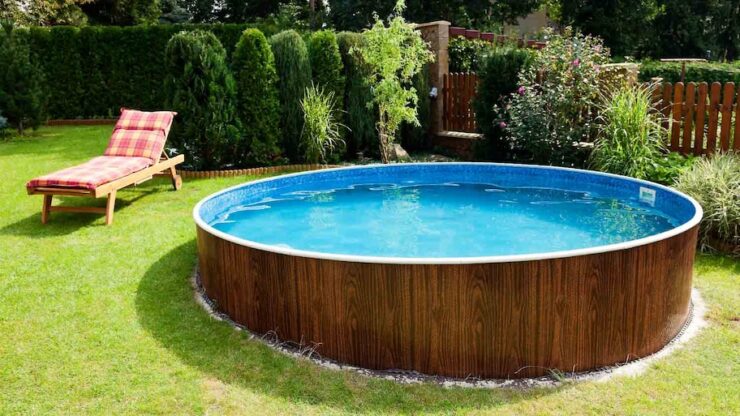
Before you start looking at pool designs, the first step is to measure and evaluate the space available in your backyard. The pool should be proportionate to the space, neither too big that it dominates the area nor too small that it becomes insignificant.
Start by measuring the area intended for the project and note the dimensions. You should also observe the terrain, considering any slopes, trees, or other obstacles that could affect its placement. Access to sunlight is another crucial factor; ideally, the pool should be positioned in a sunny spot to help keep the water warm and minimize the growth of algae. It’s also worth thinking about the view from the pool; this can significantly enhance your swimming experience.
Determining Your Pool’s Purpose
Understanding the primary use of the pool is fundamental to determining its ideal size and shape. Are you looking for a fun place for your kids to splash around, a pool for fitness, or a serene oasis for relaxation?
For example, if you want a pool for exercise, like swimming laps, a rectangular shape is a good choice, whereas a round one might be better suited for family play. If relaxation is your primary goal, then the size of the project might be less critical than its setting and the amenities you add around it. The key here is to match the pool’s purpose with the suitable size and shape.
Popular Above-Ground Pool Shapes
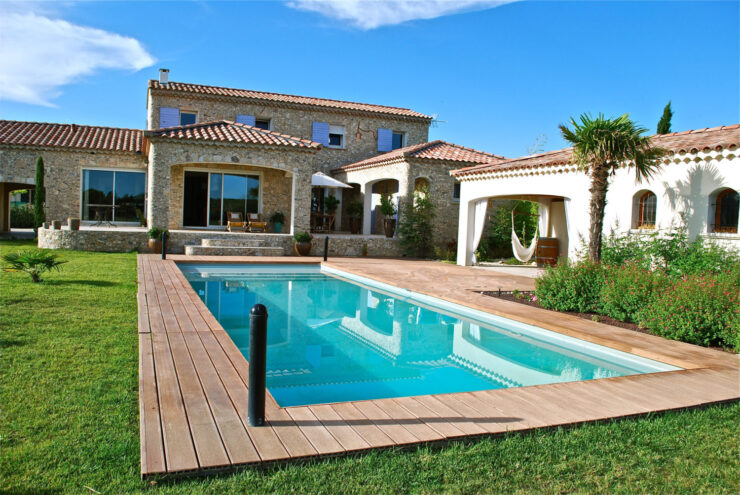
The four most common shapes for above-ground pools are round, oval, rectangular, and square. Each shape has its own benefits and drawbacks.
Round pools are generally more economical and easier to install. They offer equal swimming space from all sides, making them perfect for family fun. Oval kinds, on the other hand, have a longer length, making them great for lap swimming or games that require more length.
Rectangular ones offer the most swimming area and are perfect for those wanting to use it for exercise. Lastly, square kinds are a great space-efficient choice and can add a contemporary look to your backyard.
Size Matters: Depth and Diameter
A pool’s size is typically measured in terms of its diameter (for round ones) or length and width (for oval, square, or rectangular pools). The depth of the pool is another critical factor that affects its capacity and how it can be used. This is where professional help can come in handy and hitechpoolsau.com, a small pools on Central Coast company which excels in making smaller pools.
A larger pool will hold more water and allow more people to swim comfortably, but it will also take up more space, require more water to fill, and may cost more to maintain. Smaller ones, on the other hand, are more cost-effective and easier to manage but might not accommodate larger groups.
Considerations for Pool Depth
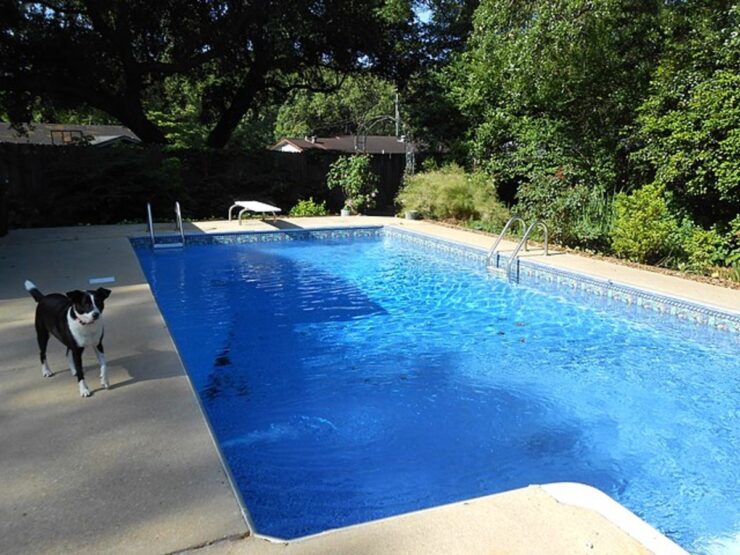
Pool depth plays a significant role in safety and usability. A shallow kind is safer for children and non-swimmers, while a deeper one allows for diving and more advanced swim activities. It’s essential to choose a depth that matches the age and swimming abilities of the users. One with a gradual depth, shallow at one end and deep at the other, can cater to everyone’s needs.
Lifestyle and Family Needs
Consider the size of your family and their swimming abilities and interests. If you have young children, safety barriers, and a shallow end are important. If your family is into fitness, a larger, possibly rectangular pool that allows for laps would be better. And if you love entertaining, a larger pool with lots of space around it for seating and tables would be ideal.
Local Building Regulations and Permits
Before installing an above-ground pool, research local regulations and permits. Your city or county might have restrictions on its size, placement, fencing, and safety features. Be sure to comply with these regulations to avoid potential fines or having to make costly adjustments later.
Budgetary Considerations
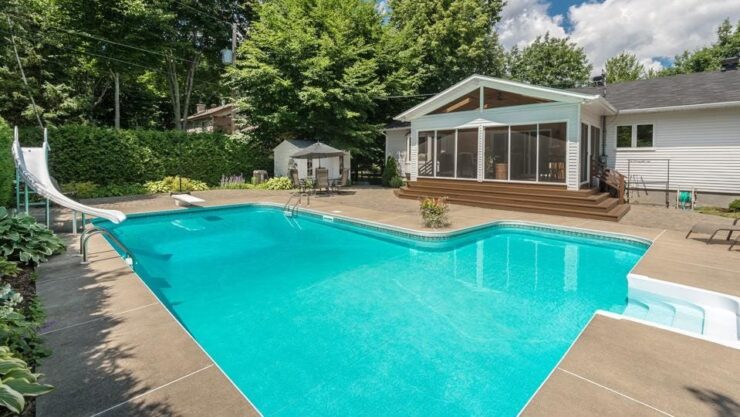
The cost of an above-ground pool varies greatly depending on its size, shape, and the materials used. Larger ones will naturally cost more upfront and also in ongoing maintenance. It’s essential to balance your desire for a large one with its long-term costs.
Accessories and Enhancements
The size of your pool affects the type of accessories you can add. For example, slides and diving boards require a certain depth to be safe. Additionally, consider the space around the pool for other enhancements like decking, landscaping, and seating areas. These can complement its shape and contribute to the overall aesthetics and functionality of the space.
Climate and Maintenance Factors
Your local climate can influence the size of your pool. In warmer areas, larger pools can be more refreshing, while smaller ones might be easier to heat in cooler climates. Furthermore, larger pools require more effort to keep clean, so if low maintenance is a priority, a smaller one might be a better choice.
Expert Consultation and Pool Builder Selection
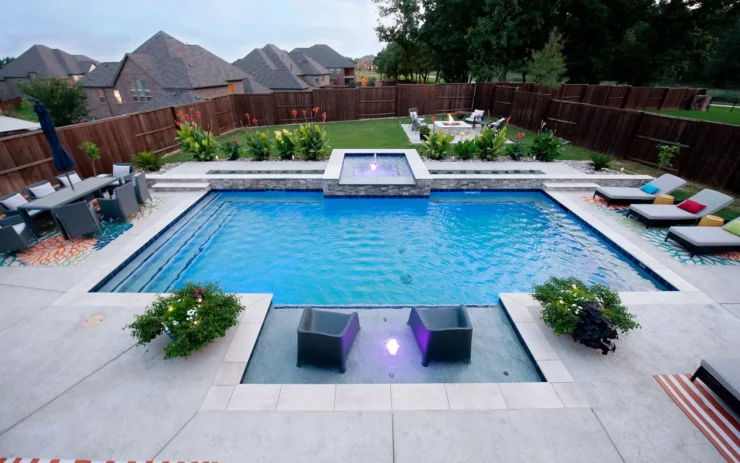
Consulting with pool experts and professional builders can provide valuable insights into what size and shape would work best for your needs. They can help you visualize the end result and make sure all considerations are taken into account. Make sure to choose a reputable builder who can guide you in making the best decision.
Concluding thoughts
Choosing the right size and shape for your above-ground pool involves careful thought and planning. But with these tips in mind, you can create an area that not only fits your space and budget but also enhances your lifestyle and meets your family’s needs. Remember, a well-planned pool can offer endless enjoyment, enhance your property’s value, and become the perfect getaway right in your backyard.

